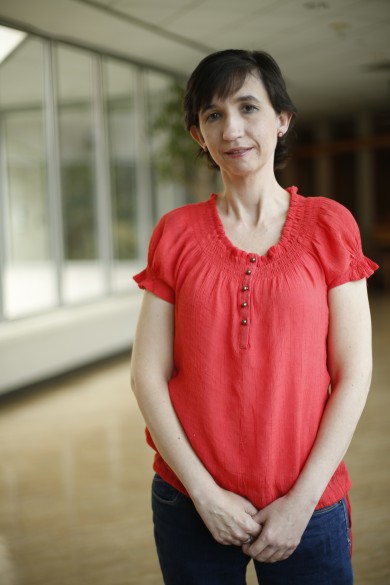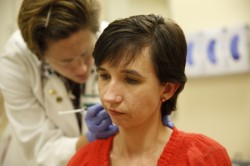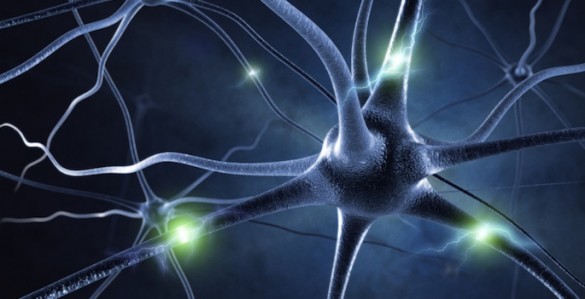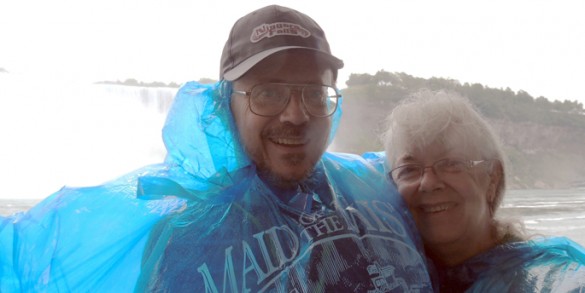
Seven years ago Tammy Frazier noticed an odd tremor in her neck. It wasn’t painful but was very noticeable, with her head almost constantly shaking back and forth.
Her primary care provider referred her to a neurologist and Frazier was immediately diagnosed with cervical dystonia.
Frazier says she was lucky to have an answer so quickly. Most patients go years without a diagnosis of this rare neurological disorder, often with providers questioning their mental health.
Cervical dystonia, sometimes called spasmodic torticollis, is an abnormal contraction of the neck muscles that causes involuntary head and neck movement. Most commonly, the chin twists toward one shoulder. The cause is unknown, although it may have a hereditary connection and affects women slightly more than men. The prevalence of the condition is not known, but some estimate between 1 million and 4 million people worldwide.
Ninety percent of patients with cervical dystonia have pain, and Frazier was soon experiencing the full brunt of the condition.
“My head was jerking backwards like whiplash and hurt so bad. The only way to stop it for a little while was to put my hand on top of my head. I couldn’t brush my teeth or comb my hair or do anything for myself with the constant jerking,” she said.
Frazier began the most common treatment for cervical dystonia, injections of botulinum toxin. The toxin decreases muscle spasms by blocking the release of the neurotransmitter acetylcholine.
“There is no cure, but the injections do reduce pain and turning. They help patients cope with a very troubling condition,” said David Charles, M.D., chief medical officer at the Vanderbilt Neuroscience Institute.

Frazier sees Fenna Phibbs, M.D., MPH, assistant professor of Neurology, every three months for injections.
“They help some but are pretty painful,” Frazier said. “They’re going into very tight, inflamed muscles. But the jerking comes back whenever I’m nervous or excited or get stressed out.
Phibbs said injections are clearly helpful but don’t provide total relief.
“This condition is not life-threatening. It makes life horrible but is not life ending. That’s why the patient has to make the decision for themselves whether or not to go ahead with surgery.”
In December 2012, Frazier opted for surgery in a procedure called deep brain stimulation (DBS), which uses implanted electrodes to send electrical pulses to interrupt the nerve signals making the head twist. Unfortunately, she suffered a hemorrhage during surgery that required that the case be stopped before the DBS device was placed.
“I’m very disappointed the DBS didn’t work but I don’t discourage others from having it. It has very high success rates and many stories of changing people’s lives. I’m just part of the 1 percent where it doesn’t work out. Although I may try again in the future.”
For now, Frazier is using injections and physical therapy to manage the pain and has great support from her parents, husband and teenage daughter. She has also found support online through Facebook and an advocacy group called ST Dystonia. She will be among the participants in ST Dystonia’s annual symposium held in Nashville Sept. 27-29.
“It’s a cruel disease,” said ST Dystonia founder Howard Thiel.
He noticed a small pain at the base of his neck in 1980. Then one day he was driving and his head suddenly pulled to the left. The only way to move it back was with his hand.
“It got worse and worse and I went eight years with a pain level 9 or 10. The pain is excruciating. I used to squeeze my head with my hands like a vice. Finally one day I
couldn’t take it anymore and attempted suicide,” Thiel said.
He says he is lucky he wasn’t successful and that his neurologist asked him to start a support group. It has grown into a nationwide network.
“I know that the only way to get stronger is to come together,” Thiel said. “We try to build a successful image for people. Sixty percent have depression. They keep looking in the rearview mirror but you have to look out the front windshield. We try to make the outlook as positive as possible.”
Three Vanderbilt physicians will present at the symposium: Charles, neurologist Tom Davis, M.D., and neuropsychologist Scott Wylie, Ph.D.
“With nine movement disorders faculty involved in treatment and the range of services we offer, Vanderbilt has one of the most robust practices for cervical dystonia in the U.S.,” Charles said.
All four FDA-approved botulinum toxins are available at Vanderbilt, and it is part of international research trials of new neurotoxins. The Medical Center also participated in the largest multi-center registry of cervical dystonia patients called CD-PROBE (Cervical Dystonia Patient Registry for the Observation of Botulinum Toxin Type A Efficacy). Research results will begin to be published this fall.
“Not many doctors understand this disorder. They used to say it was all in our heads and we should see a psychiatrist,” Thiel said. “ST Dystonia is working against that. We make the symposium educational but also fun, so people can meet others and hear their stories.”
For more information about ST Dystonia and its symposium, visit www.stdystonia.org.















